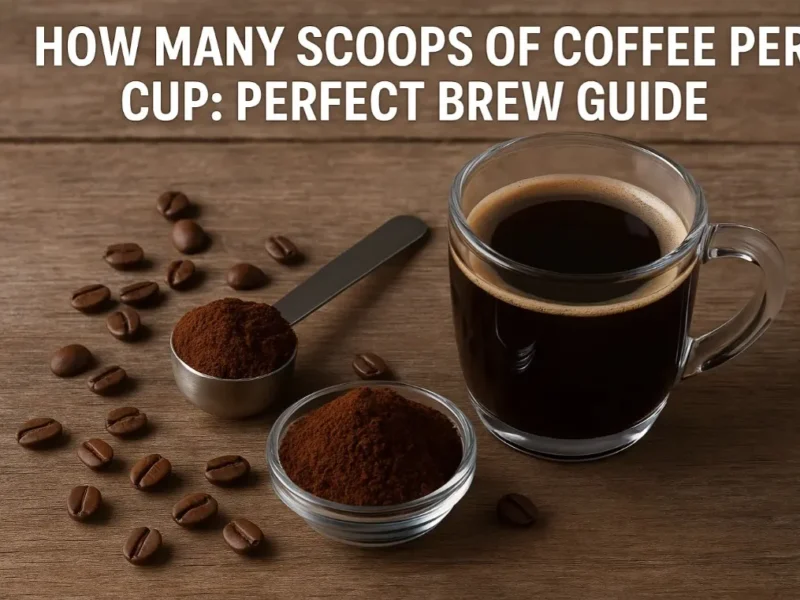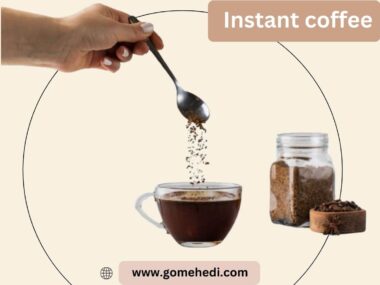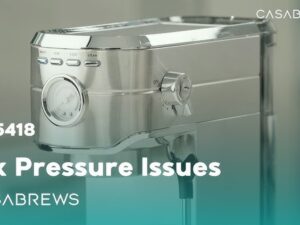Wondering how many scoops of coffee per cup you should use? While one scoop is standard, you can tweak it for a stronger or milder flavor.
Brewing the perfect cup of coffee is an art. The right amount of coffee can make a big difference. For many, the standard is one scoop per cup. But, what if you prefer a stronger or lighter brew? Understanding the proper coffee-to-water ratio is crucial.
It enhances flavor and ensures consistency in every cup. Whether you’re a coffee newbie or a seasoned barista, getting this ratio right is key. Let’s explore how you can tailor your coffee to suit your taste buds perfectly.
“Coffee is a language in itself.” – Jackie Chan
Coffee Basics
Understanding how many scoops of coffee per cup to use is fundamental for creating the perfect brew. Coffee Basics helps you master this art by diving into the essentials. This includes knowing the types of coffee, the various brewing methods, and how to measure your coffee precisely.
Types Of Coffee
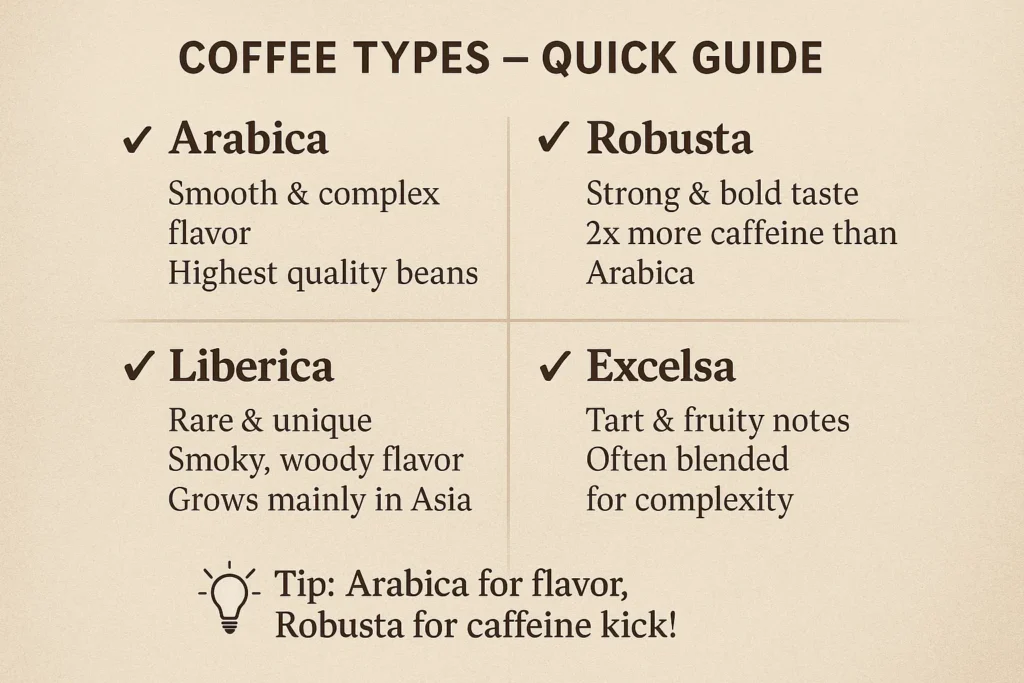
Knowing the different coffee types can greatly influence your brewing experience. Each type has unique characteristics that affect the flavor and strength of your cup of coffee. Here are some common coffee types:
- Arabica: Known for its smooth, complex flavor. Often considered the highest quality.
- Robusta: Strong and bold, with higher caffeine content. Often used in espresso blends.
- Liberica: Rare, with a unique, smoky flavor. Not widely available.
- Excelsa: Tart and fruity, often used in blends to add complexity.
Each type of coffee bean affects your cup’s flavor and strength. Understanding these differences helps in selecting the right coffee for your taste.
| Type of Coffee | Flavor Profile | Common Uses |
|---|---|---|
| Arabica | Smooth, sweet, fruity | Specialty coffee, single-origin |
| Robusta | Bitter, strong, nutty | Espresso, instant coffee |
| Liberica | Smoky, woody, floral | Specialty blends |
| Excelsa | Tart, fruity, complex | Blends for complexity |
Brewing Methods
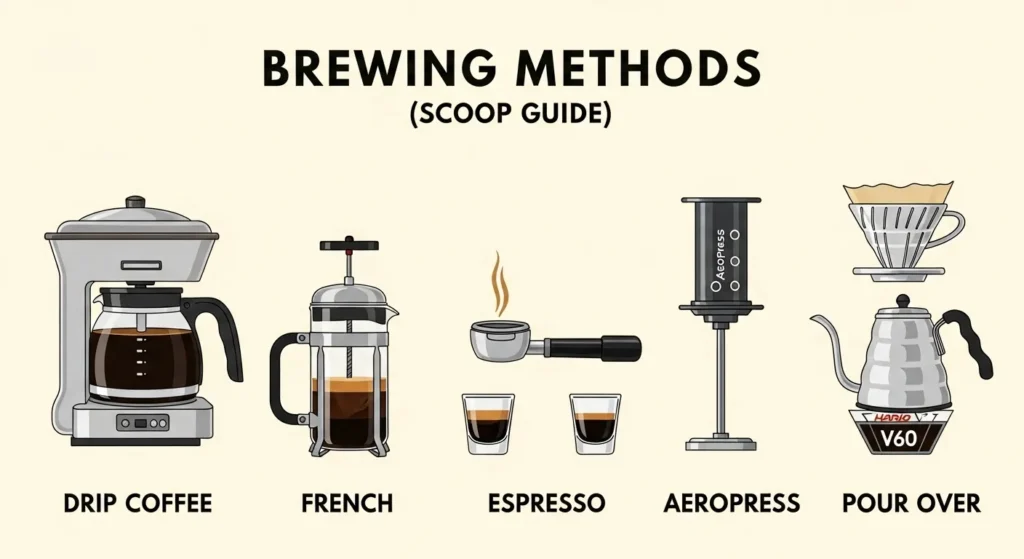
Brewing methods also play a crucial role in determining how many scoops of coffee per cup you need. Each method has its own coffee brewing ratio and technique. Here are some popular brewing methods:
- Drip Coffee: One of the most common methods. Use a coffee machine and a standard coffee measurement. Typically, one scoop of coffee per cup.
- French Press: Known for a rich and full-bodied flavor. Use a coarser grind and more coffee. Usually, two scoops of coffee per cup.
- Espresso: Requires finely ground coffee and a specialized machine. A single shot needs about one scoop of ground coffee.
- AeroPress: Versatile and quick. The coffee strength can vary. Often, one to two scoops of coffee per cup.
- Pour Over: Provides control over the brewing process. Use a medium-coarse grind. Typically, one to two scoops of coffee per cup.
Each brewing method requires a different approach to coffee measurement. This ensures the desired coffee flavor and strength in your cup of coffee.
| Brewing Method | Grind Size | Scoops of Coffee per Cup |
|---|---|---|
| Drip Coffee | Medium | 1 |
| French Press | Coarse | 2 |
| Espresso | Fine | 1 |
| AeroPress | Fine to medium | 1-2 |
| Pour Over | Medium-coarse | 1-2 |
“Good coffee is like friendship: rich, warm, and strong.”
Importance Of Coffee Measurement
Making the perfect cup of coffee is an art. One crucial factor in achieving that ideal brew is coffee measurement. Measuring coffee correctly ensures that each cup you make is consistently delicious. The right amount of coffee per cup impacts flavor, strength, and overall satisfaction. Let’s dive into why coffee measurement is so important.
Consistency In Flavor
Consistency is key to enjoying your coffee. Measuring your coffee ensures that each cup tastes the same every time. This is important for people who cherish their morning routine. A consistent flavor can be achieved by following a simple rule of thumb:
- Use one scoop of coffee per six ounces of water.
- Adjust the ratio to your taste preference.
Using the same amount of coffee each time eliminates the guesswork. It also helps you perfect your brewing technique. Imagine having a cup that tastes perfect every morning. This is possible with accurate measurement.
Here’s a quick guide:
| Water (Ounces) | Coffee (Scoops) |
|---|---|
| 6 | 1 |
| 12 | 2 |
| 18 | 3 |
Remember, keeping measurements consistent ensures you know what to expect. This means no surprises in your coffee cup.
Avoiding Over Or Under-Brewing
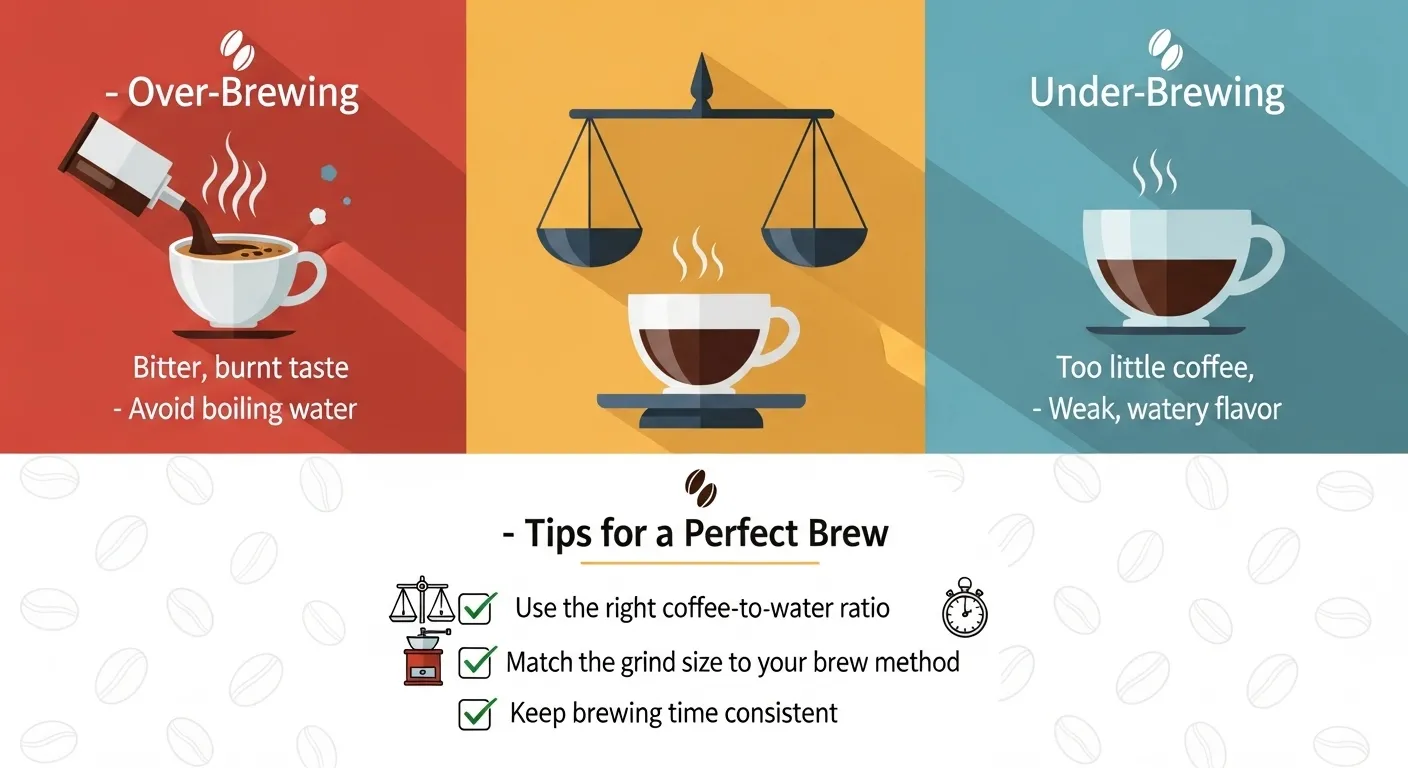
Brewing coffee is a delicate process. Using the wrong amount of coffee can lead to over or under brewing. Over brewing occurs when too much coffee is used. This can make your coffee taste bitter and unpleasant. Under brewing happens when too little coffee is used. This results in a weak and watery cup.
To avoid these issues, follow these tips:
- Use the recommended coffee-to-water ratio.
- Adjust the grind size of your coffee beans.
- Ensure your brewing time is consistent.
Over brewing can also be avoided by not using boiling water. Water that is too hot extracts too much from the coffee grounds. This makes the coffee taste burnt. Under brewing can be fixed by ensuring you use enough coffee for the water amount. A balanced cup of coffee is the goal.
Here’s a simple breakdown:
| Issue | Cause | Solution |
|---|---|---|
| Bitter Taste | Too much coffee | Use less coffee |
| Weak Taste | Too little coffee | Use more coffee |
Precision in measurement helps avoid these common brewing issues. This ensures a perfect cup every time.
Coffee Measurement
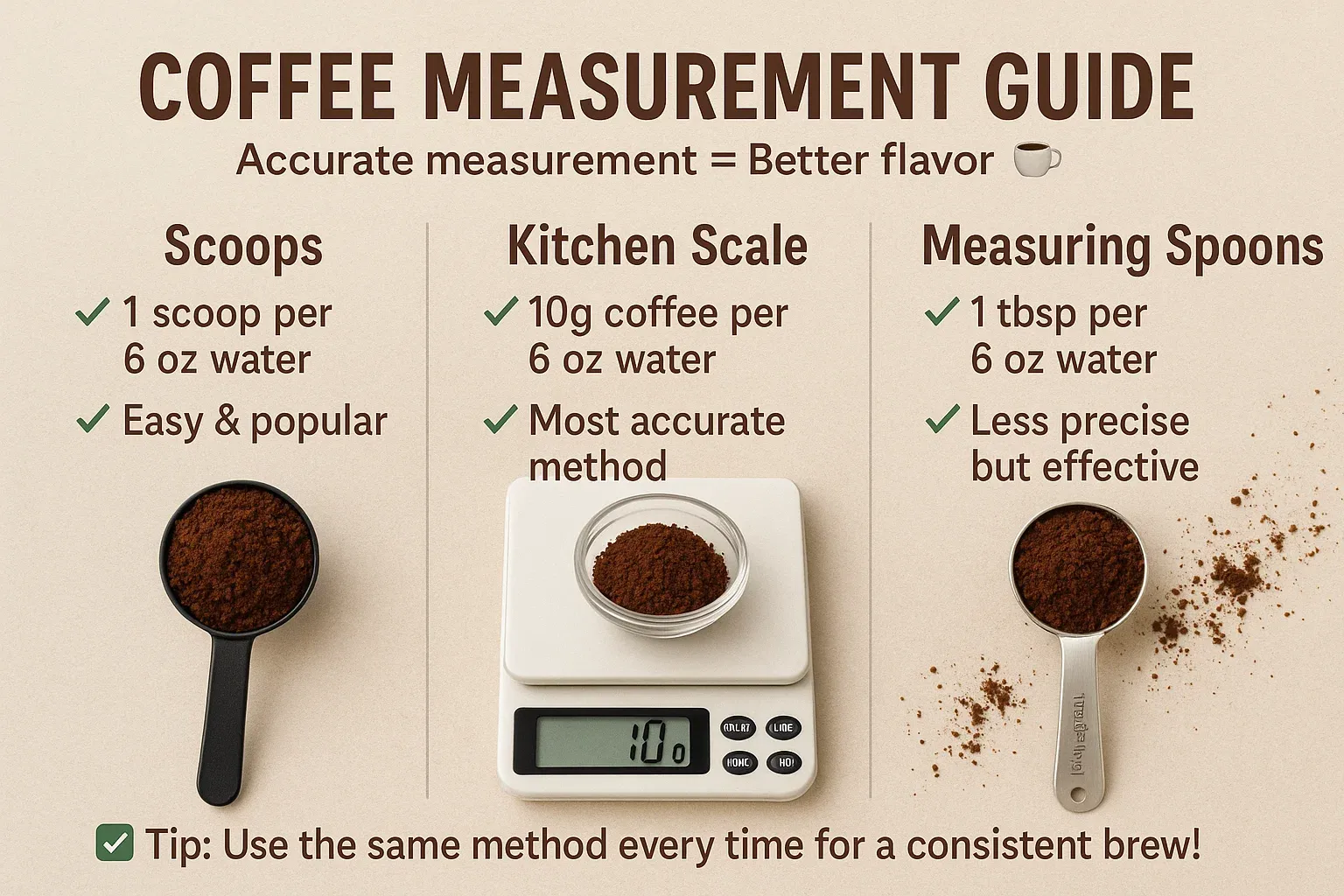
Measuring coffee accurately is essential. It ensures that you get the best flavor from your beans. There are different ways to measure coffee. You can use scoops, a kitchen scale, or measuring spoons.
Here’s how to use each method:
- Scoops: One scoop per six ounces of water is the standard. Adjust based on your taste.
- Kitchen Scale: Weigh your coffee for precision. Use 10 grams of coffee per six ounces of water.
- Measuring Spoons: One tablespoon of coffee per six ounces of water. This method is less precise but still effective.
Using a scale is the most accurate method. It ensures the perfect coffee-to-water ratio. For those who prefer simplicity, scoops and measuring spoons work well too. Consistent measurement results in a balanced brew.
In summary, accurate coffee measurement is crucial. It impacts flavor consistency and prevents brewing issues. Whether you use scoops, a scale, or spoons, find the method that works best for you. This will help you enjoy a perfect cup of coffee every time.
“Life begins after coffee.”
Standard Scoop Size
When brewing coffee, understanding the standard scoop size is crucial. It ensures a consistent and enjoyable cup every time. Knowing how many scoops of coffee per cup depends on the size of the scoop. This guide will walk you through the basics, providing clarity and helping you measure your coffee accurately.
What Is A Scoop?
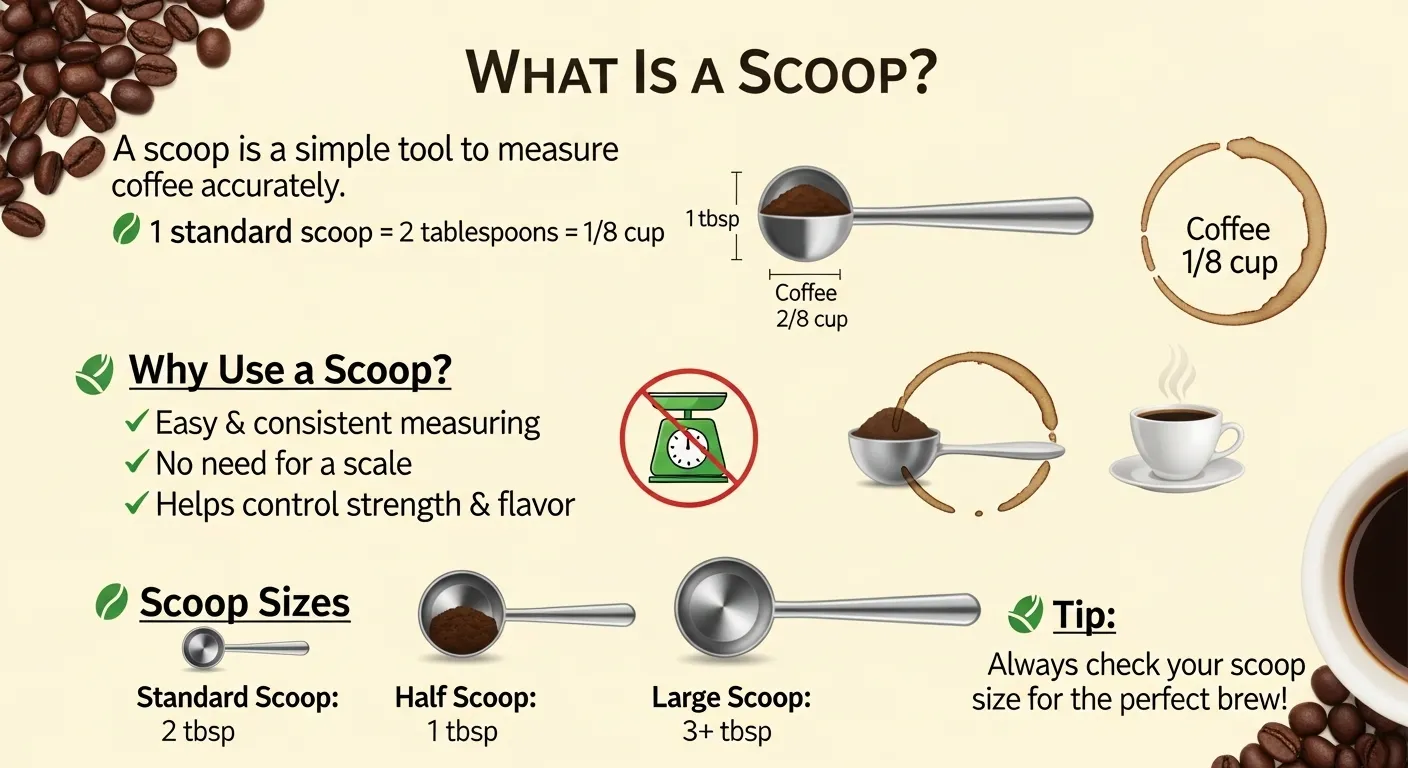
A scoop is a specific measure used to portion coffee grounds. It simplifies the process of making coffee, giving you a precise amount each time. A standard coffee scoop typically holds 2 tablespoons of coffee grounds. This measurement helps maintain consistency in taste and strength.
Here are some key points about scoops:
- A scoop usually equals 2 tablespoons or 1/8 cup.
- Using a scoop makes it easier to measure coffee without a scale.
- Consistency in scoop size ensures a uniform flavor in every cup.
Different types of scoops are available:
- Standard scoop: Holds 2 tablespoons.
- Half-scoop: Holds 1 tablespoon.
- Large scoop: Holds 3 or more tablespoons.
Using the right scoop size is essential for the perfect brew. It helps avoid weak or overly strong coffee. Always check the scoop size to match your desired coffee strength.
Common Measurements
Understanding common measurements ensures you use the correct amount of coffee. A standard coffee scoop holds 2 tablespoons, but there are various other common measurements to consider:
Here’s a breakdown of some common coffee measurements:
| Measurement | Volume | Equivalent |
|---|---|---|
| 1 scoop | 2 tablespoons | 10 grams |
| 1/2 scoop | 1 tablespoon | 5 grams |
| 1 cup of coffee | 8 fluid ounces | 240 milliliters |
Using these measurements helps you get the right balance of coffee to water. For a standard 8-ounce cup, one scoop (2 tablespoons) of coffee is recommended. Adjust the amount based on your taste preferences.
Here are some tips for measuring coffee:
- Use a consistent scoop size for each brew.
- Measure the coffee grounds accurately.
- Adjust the amount of coffee based on your taste.
By understanding these common measurements, you can brew coffee to your exact liking. Consistency in measurement results in a consistently great cup of coffee every time.
Coffee-to-water Ratio
Understanding how many scoops of coffee per cup depends on the Coffee-to-Water Ratio. This ratio is crucial for brewing a perfect cup of coffee. It balances the strength and flavor, ensuring a satisfying experience. Let’s explore the details of this essential aspect of coffee preparation.
General Guidelines
When determining the Coffee-to-Water Ratio, general guidelines provide a starting point. For a standard cup of coffee, the recommended ratio is one coffee scoop (about 2 tablespoons) per 6 ounces of water. This ratio ensures a balanced flavor and optimal strength.
Here are some key points to remember:
- Standard Ratio: 1 coffee scoop per 6 ounces of water.
- Measuring Scoops: Use a standard coffee scoop or 2 level tablespoons.
- Water Volume: Measure water accurately to maintain the correct ratio.
- Consistency: Keep measurements consistent for each brew.
Below is a table summarizing the general guidelines:
| Number of Cups | Water (Ounces) | Coffee Scoops |
|---|---|---|
| 1 | 6 | 1 |
| 2 | 12 | 2 |
| 4 | 24 | 4 |
Adjusting For Taste
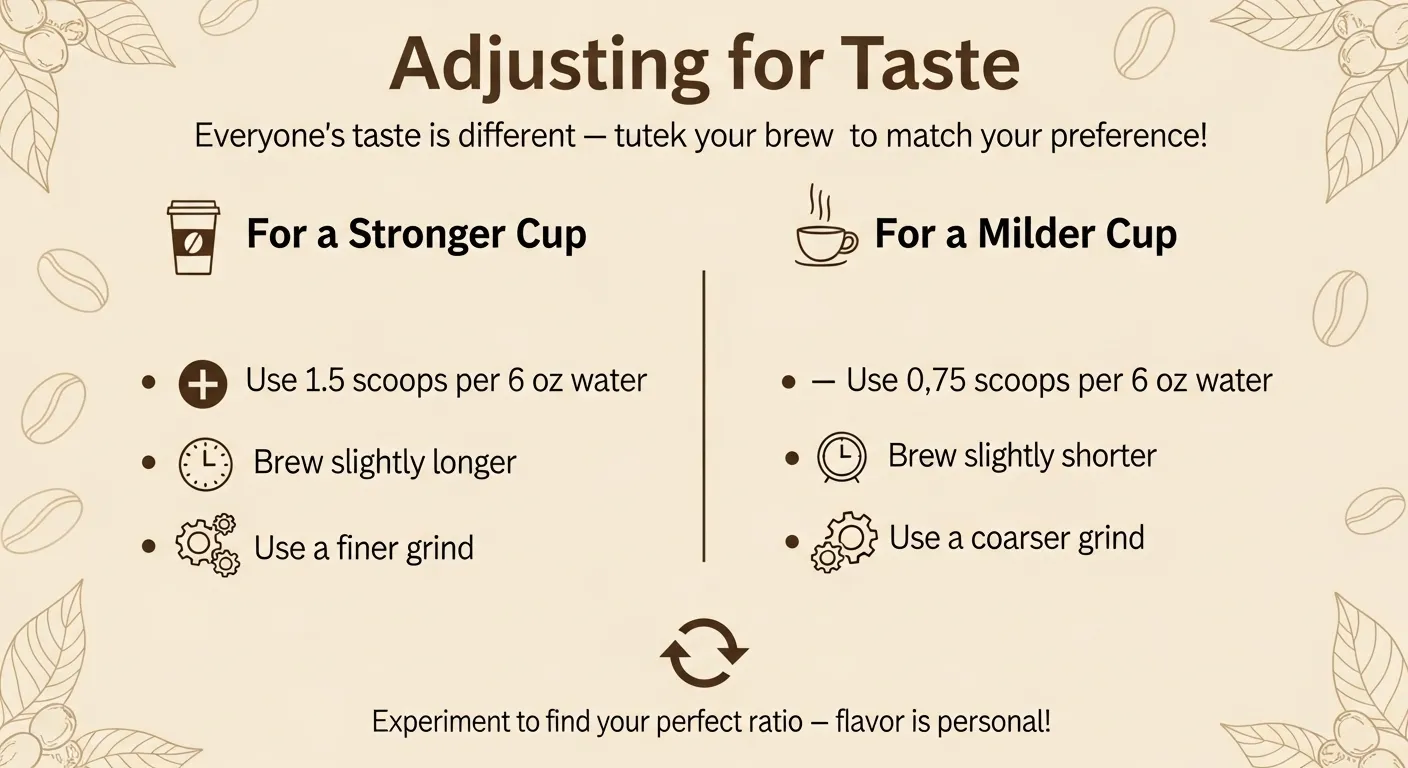
Adjusting the Coffee-to-Water Ratio is essential for personal taste preferences. Some like a stronger brew, while others prefer a milder flavor. Experiment with different ratios to find your perfect cup.
Consider these tips for adjusting coffee strength:
- Increase Coffee Scoops: For a stronger cup, add more coffee scoops. Try 1.5 scoops per 6 ounces of water.
- Decrease Coffee Scoops: For a milder brew, reduce the amount. Use 0.75 scoops per 6 ounces of water.
- Brewing Time: Adjust brewing time for different strengths. Longer brewing extracts more flavor.
- Grind Size: Finer grind increases strength, coarser grind reduces it.
Experimenting with these factors helps find the ideal balance. Remember, personal preference plays a significant role in coffee preparation.
Coffee Brewing Ratio
The Coffee-to-Water Ratio varies with different brewing methods. Each method may require slight adjustments for optimal flavor extraction.
Here are some common coffee preparation methods and their recommended ratios:
- Drip Coffee Maker: Standard ratio of 1 scoop per 6 ounces of water.
- French Press: Slightly stronger with 1.5 scoops per 6 ounces of water.
- Pour Over: Similar to drip, use 1 scoop per 6 ounces of water.
- Espresso: Much stronger, about 1 scoop per 2 ounces of water.
Below is a table for quick reference:
| Brewing Method | Water (Ounces) | Coffee Scoops |
|---|---|---|
| Drip Coffee Maker | 6 | 1 |
| French Press | 6 | 1.5 |
| Pour Over | 6 | 1 |
| Espresso | 2 | 1 |
These guidelines provide a foundation for brewing coffee. Adjust the Coffee-to-Water Ratio based on your taste and the method used. Enjoy a perfect cup every time.
Factors Influencing Scoop Amount
How many scoops of coffee per cup? This question puzzles many coffee lovers. The answer depends on several factors. These factors play a vital role in determining the perfect scoop amount. Understanding these factors can help you make a delicious cup of coffee every time.
Coffee Bean Type
The type of coffee bean you use can influence the scoop amount. Different beans have unique characteristics. These characteristics can change how much coffee you need. Here are some key points to consider:
- Arabica vs. Robusta: Arabica beans are milder and sweeter. Robusta beans are stronger and more bitter. Arabica may require a bit more coffee to get a similar strength as Robusta.
- Roast Level: Light, medium, and dark roasts also affect the scoop amount. Light roasts are denser and might need more scoops. Dark roasts are less dense and require fewer scoops.
- Origin: Beans from different regions have distinct flavors. Ethiopian beans are fruity and floral. Brazilian beans are nutty and chocolatey. Adjusting the scoop amount can help balance these flavors.
| Coffee Bean Type | Scoop Recommendation |
|---|---|
| Arabica | 1-2 scoops per cup |
| Robusta | 1 scoop per cup |
| Light Roast | 2 scoops per cup |
| Dark Roast | 1 scoop per cup |
Knowing the type of bean and its characteristics helps you adjust the scoop amount. This ensures you extract the best flavors from your coffee.
Grind Size
Grind size is another crucial factor. It impacts the strength and flavor of your coffee. The grind size determines how quickly water passes through the coffee grounds. Here’s how:
- Coarse Grind: This grind is chunky. It’s best for French press and cold brew. Coarse grind requires more coffee because water flows quickly through large particles.
- Medium Grind: This grind is similar to sand. It’s ideal for drip coffee makers and pour-over methods. Medium grind balances strength and extraction time. Use the standard 1-2 scoops per cup.
- Fine Grind: This grind is powdery. It’s perfect for espresso. Fine grind has a larger surface area. This leads to faster extraction. Use less coffee, about half a scoop per shot.
| Grind Size | Scoop Recommendation |
|---|---|
| Coarse | 2 scoops per cup |
| Medium | 1-2 scoops per cup |
| Fine | 0.5 scoops per shot |
Adjusting the grind size helps you control the coffee’s strength and flavor. Understanding grind size allows you to perfect your coffee-making process.
Experimenting With Scoops
Determining how many scoops of coffee per cup can be a fun experiment. Different people have different tastes, so experimenting with scoops can help you find your perfect brew. Let’s dive into how personal preferences and taste testing can guide you.
Personal Preference
Personal preference plays a big role in how many scoops of coffee you use per cup. Some like their coffee strong, while others prefer a milder taste. Here are a few tips to consider:
- Strong Coffee: Use 2 scoops for a 6-ounce cup.
- Medium Coffee: Use 1.5 scoops for a 6-ounce cup.
- Mild Coffee: Use 1 scoop for a 6-ounce cup.
Adjusting the number of scoops is simple. If you like your coffee stronger, add an extra half scoop. For a lighter taste, use a bit less. Consistency is key. Once you find your preferred strength, stick to the same ratio.
Different coffee beans may require different amounts. For example, dark roast beans have a bolder flavor. You might need fewer scoops compared to light roast beans. Experimenting with different beans can also be exciting.
| Type of Coffee | Scoops per 6-ounce Cup |
|---|---|
| Strong | 2 scoops |
| Medium | 1.5 scoops |
| Mild | 1 scoop |
Taste Testing
Taste testing is a great way to find out how many scoops of coffee per cup you enjoy. Start with the standard ratio of 1 scoop per 6-ounce cup. Then, adjust based on your taste.
Here is a simple taste testing method:
- Brew a cup with 1 scoop of coffee.
- Taste and note the flavor, strength, and aroma.
- Brew another cup with 1.5 scoops.
- Compare the taste and strength to the first cup.
- Adjust the number of scoops as needed until you find your perfect cup.
Remember, your taste can change over time. What you enjoy now might be different in a few months. Regular taste testing helps you adapt to your evolving preferences.
Another important factor is the grind size. Finer grinds extract more quickly, affecting the strength of your coffee. Coarser grinds take longer and may require more scoops. Experiment with both grind size and scoop number to find your ideal combination.
By experimenting with scoops and tasting different brews, you can discover what you truly enjoy. Enjoy the process and the delicious results!
Using A Coffee Scale
When brewing coffee, the right number of scoops can make a big difference. Using a coffee scale ensures consistency and precision. This method is more reliable than using scoops alone. Let’s explore the benefits and how to use a coffee scale effectively.
Benefits Of Weighing
Weighing coffee offers several advantages over using scoops:
- Consistency: Every cup tastes the same, whether it’s your first or tenth.
- Precision: Accurate measurements ensure the perfect coffee-to-water ratio.
- Waste Reduction: Avoid using too much or too little coffee, saving money and resources.
- Recipe Replication: Easily repeat successful coffee recipes or share them with friends.
Consider the following table to understand the difference in weight when using a scale versus scoops:
| Measurement Method | Coffee Weight (grams) |
|---|---|
| 1 Scoop (light) | 5 grams |
| 1 Scoop (heaped) | 10 grams |
| Scale Measurement | 7 grams |
Using a scale eliminates the guesswork. You know exactly how much coffee you are using each time. This leads to a better tasting, more enjoyable cup of coffee.
How To Use A Scale
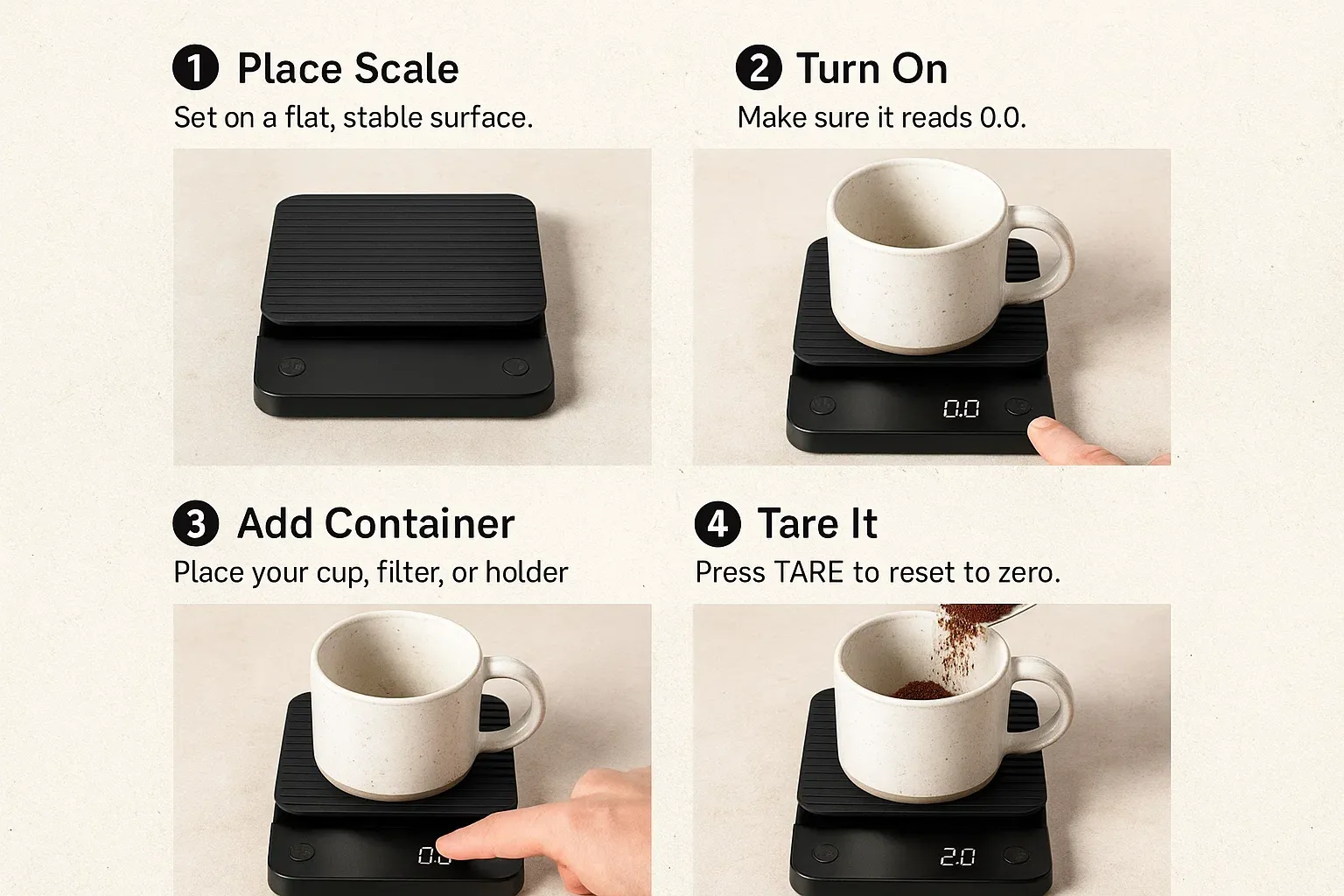
Follow these simple steps to use a coffee scale:
- Place the Scale: Set your scale on a flat, stable surface.
- Turn it On: Power on the scale and ensure it reads zero.
- Place Container: Put your coffee container or filter on the scale.
- Tare the Scale: Press the tare button to reset the scale to zero.
- Add Coffee: Gradually add coffee until you reach the desired weight.
Here’s a quick reference for common coffee weights:
- Single Espresso: 7-9 grams
- Double Espresso: 18 grams
- Pour Over: 15-18 grams per cup
- French Press: 50-60 grams per liter
Using a scale is easy and becomes second nature with practice. It ensures your coffee is always delicious and consistent.
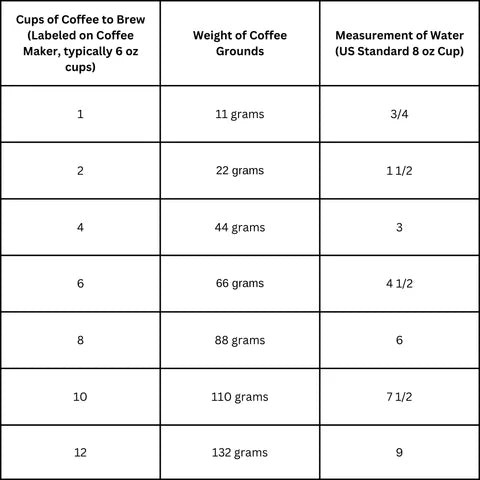
Credit: www.drivencoffee.com
Common Mistakes
Making a perfect cup of coffee is an art. The right amount of coffee and water is essential. Many make mistakes that affect the taste. Knowing these common mistakes can help you brew better coffee.
Too Much Coffee
Using too much coffee can lead to a bitter and overpowering taste. This is a common mistake. People think more coffee means more flavor. In reality, it ruins the balance.
Here are some signs you may be using too much coffee:
- The coffee tastes too strong.
- The texture is thicker than usual.
- You feel jittery after drinking it.
It’s important to follow a standard ratio. For a strong cup, use one to two tablespoons of coffee per six ounces of water. Measuring spoons can help you get the right amount. Consistency is key.
| Water (Ounces) | Coffee (Tablespoons) |
|---|---|
| 6 | 1 – 2 |
| 12 | 2 – 4 |
| 24 | 4 – 8 |
Stick to the recommended amounts. This ensures a well-balanced cup. Too much coffee can be as bad as too little.
Too Little Water
Using too little water can also affect your coffee. It makes the coffee too concentrated. This leads to a harsh and unpleasant taste.
Signs of too little water:
- The coffee is very strong and bitter.
- You have less coffee than expected.
- The grounds are not fully saturated.
Always measure your water. For every tablespoon of coffee, use six ounces of water. You can use a kitchen scale or a measuring cup. This ensures consistency.
| Coffee (Tablespoons) | Water (Ounces) |
|---|---|
| 1 | 6 |
| 2 | 12 |
| 4 | 24 |
Use the right amount of water. This helps the coffee grounds release their full flavor. Avoid cutting corners. Your taste buds will thank you.
Frequently Asked Questions for How Many Scoops of Coffee Per Cup
How Many Scoops Of Coffee Per Cup?
Typically, one scoop of coffee per 6 ounces of water is recommended. Adjust based on your taste preference.
What Is A Coffee Scoop Size?
A standard coffee scoop holds 2 tablespoons of ground coffee. This measurement ensures a balanced brew.
Can I Use More Than One Scoop?
Yes, you can use more than one scoop for a stronger coffee. Adjust to your taste preference.
How Do I Measure Coffee Without A Scoop?
Use two tablespoons of ground coffee per 6 ounces of water. This equals one coffee scoop.
Conclusion
Finding the perfect coffee scoop ratio takes practice. Start with one scoop per cup. Adjust based on taste preference. Experiment with different coffee brands and grinds. Always use fresh, quality coffee beans. Measure consistently for the best results. Enjoy your coffee-making journey.
Savor each cup and tweak as needed. Remember, coffee is personal. Make it the way you love it.
Happy brewing! ☕
